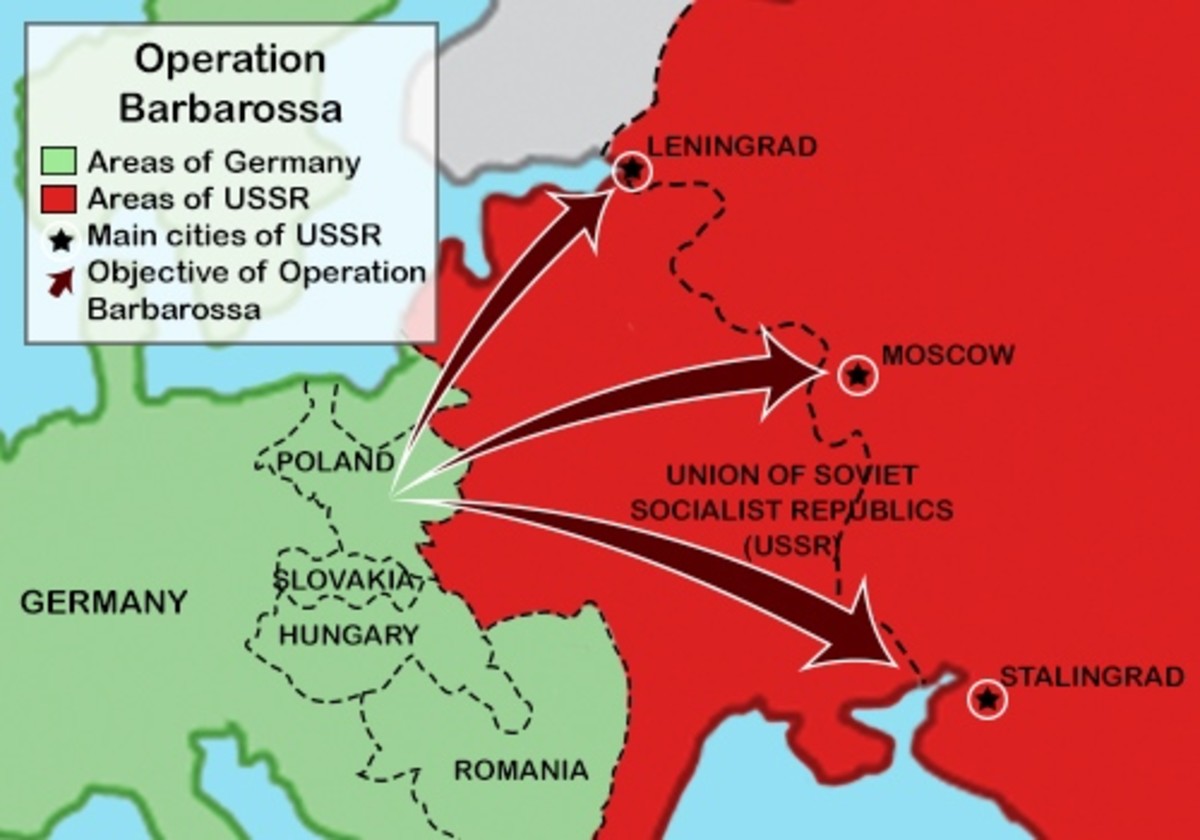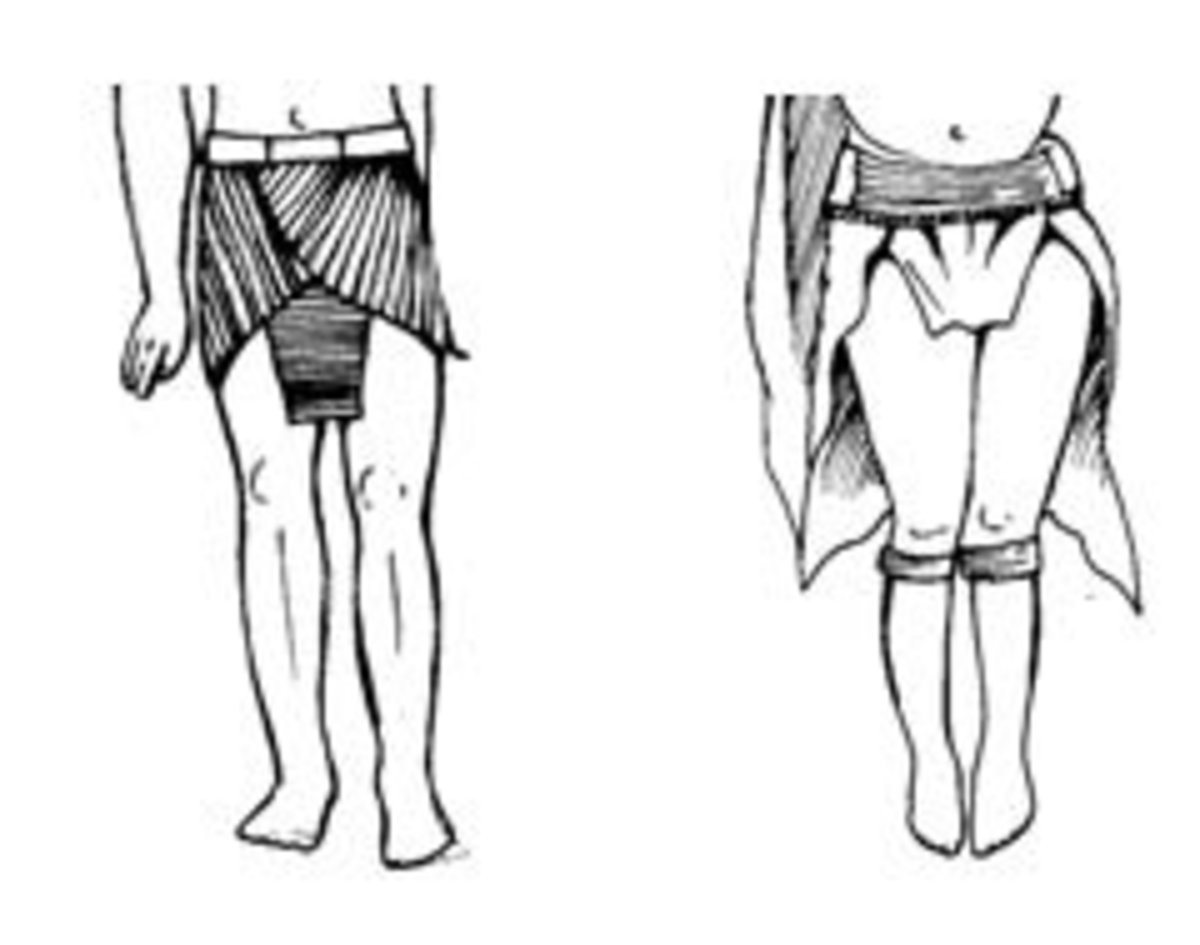Tapu in Oceania
Defining Tapu
In the world of today not many stress over crossing a black cat's path or the consequences of breaking a mirror; and hardly anyone fears Friday the 13th. Most brush them off as superstitions or old wise tales, but to some these taboos, as well as others, are never forgotten. Taboos or Tapus, began in ancient times when everything was still being discovered. Back then they were respected and were guidelines to live by. If a tapu was broken the consequences were harsh, sometimes even ending in death. Tapus were often declared during turning points in ones life; usually at births, deaths, initiations, and marriages. According to the on-line encyclopedia a tapu "can be placed on an object, person, place, or word that is believed to have inherent power above the ordinary." The Maori define tapu as something "under religious restriction", "beyond ones power" or "inaccessible" (Fletcher 54). To them, tapu is considered contagious and can be transmitted through contact. The people of Melanesia, Micronesia, and Polynesia strongly believed in tapus and the power they possessed. In Polynesia tapu is something that is sacred; in their tradition mana, which is the power of elemental forces of nature embodied in an object or person, is directly interlocked with the tapu system and is essential in order to keep their world "functioning normally" (Kjellgren 10). To them mana was an electrical charge and if one of higher mana touched one of lesser mana then it would drain the higher mana being (10). In order to keep this from happening the Polynesians developed their tapu system. The tapu system in Oceania was the basis for the islanders' religion and everyday life. "Chants, offerings, and tapus on food and sexual activity were ways people could interact with spirits" (Strathern 220). Another aspect relating to tapu is mana; mana is directly related to tapus of people. The higher your mana the more dangerous you are to others.
Alfred Gell defined tapu as, "the general quality of personal, sacred distinctiveness, which was continually subject, to dispersion" (35). He considered objects and people to hold sacred tapu as long as they had "po-derived" and "atua-derived" qualities (35). The po being the darkness or the world of the "night" and the atua meaning "spiritual element" (21 & 26). He claimed that people were sacred "because their coming-into being recapitulated the birth of gods" and "creative activities were sacred because the activity of craftsmen is godlike" (35). Since creative activities such as building a canoe, were considered having godlike qualities certain rituals had to be performed in order to remove the tapu (Kjellgren 11). However, some countries have abandoned their tapu system after European contact. My findings will cover the different kinds of tapus among the people of Oceania. Of these tapus I will be focusing on are the food, sibling incest, method and habitat, people as a tapu, and how it's used in a modern society.
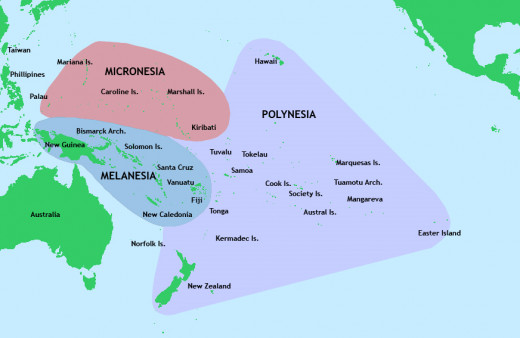
Food Tapu
A tapu is mainly defined as forbidden; something that contains great power and instills fear in the people who believe. Tapus are not only put on people or places, but food as well. The Gnau people, of the West Sepik of Papua New Guinea, have rules for nearly all of their food which determines whether or not they are right or wrong for the person to eat. Food tapus are sometimes set by "classifications of kinds of food, relationships between the people who give and receive, age, sex, time and place, activities, etc." (Lewis 173). Now these guidelines only apply to individuals and not the whole group. So one's food could be another's poison. This tapu is different for men and women; with men it only affects their hunting, but with women it affects them and their husbands hunting. One example of a forbidden food is a bird of paradise. According to the Gnau people a certain bird of paradise is associated with infidelities in marriages and shouldn't be eaten by women. In cases of the individual, that person must learn the rules about certain food and if the rules apply to them. For example, if your totem was a whale of turtle it would be tapu for you to eat them because it would be like eating your brother. "The rules and tapus are meant to guide and protect people, they have a preventive or prophylactic purpose" (175). The food tapu is not only set to protect the person, but also helps to conserve the species from extinction. By forbidding the killing of certain animals this helps to ensure their survival and eliminate their extinction (Colding 10).
The Maori also have food tapus that they follow. Their concern for tapu was mainly seen in the handling and consumption of food. Since people with higher mana were considered sacred certain precautions had to be taken when dealing with food, so that harm wasn't transmitted to others of lesser mana. People of higher mana, usually the chief, were never allowed to touch food that was to be eaten by people with lesser status. "While in daily life, the consumption of sacred food was a sin, in the ritual removal of tapu, sacred food was consumed" (Fletcher 55). However, the only ones allowed to eat this food were chiefs, senior family members, and priests (56). If one violated a tapu restriction, the consequences were disastrous unless rituals were performed to prevent them . For them, the food tapu protects the ones of lesser mana from suffering the consequences of precautions not taken by the ones of higher mana.
Incest Tapu
One tape that is known all over the globe is the sibling incest tapu. This tapu prohibits marriage between siblings and other close kin; even though it's prohibited "the cultural recognition of a brother's and sister's socially and economically charged intimacy creates a unique bond that unites them for life" (Weiner 276). According to Weiner, the tapu of sibling incest seems to only heighten the possibilities of sibling intimacy. It seems that some cultures in Oceania believe that the strength of the sibling bond in marriage is one that exhibits power and most importantly reproduction power. It keeps the bloodlines strong and pure. The stronger the tapu "the more it reveals this reproductive power and instead of being suppressed, it is thrown into the political domain" (277).
Among Hawaiians ignoring the sibling incest tapu is important in keeping the bloodlines pure and assuring the highest rank in offspring (Bixler 264). A woman's role is vital to the transmission of mana and political strategies in Hawaii, which could contribute tas to why they ignore the sibling incest tapu. "Hawaii sibling marriage segments the highest ranks in society, affirming the uncompromised connections that sisters have to divine gods and the most efficient mana" (Weiner 291). To them it make sense, the stronger the bloodline the more powerful the mana. In our society we are taught that it is disgusting and morally wrong to have sexual relations with your sibling, but to them their belief in mana overruled the tapu.
In Samoa there are similar ideas of the sibling incest tapu; to Samoans the power of sibling intimacy lies in reproductions, mana, and the relationship between chief and his sacred sister, just as in Hawaii (298). Sibling intimacy was important because of the idea of powerful mana and high rank thriving from the bond. It was important for a chief to produce children with high mana and the best way for that to happen was by marrying his sibling. In Samoa fine mats were symbols of sibling intimacy. The sacred sister was said to guard he chiefs fine mats and was given a special fine mat to honor her dignity. The chief must also give her his most prized mat; and within these circulations of fine mats were sibling sexual relations (299). The presentation of fine mats from brother to sacred sister symbolizes sibling intimacy, and "reveals them as the conserving and reproductive forces in the complex political and economic affairs of the descent group" (300).
There was a purpose for breaking this tapu and many aboriginal people believed strongly in the power gained from sibling marriage. Sibling marriage helped ensure the bloodline was strong with rank, mana, and retained a connection to the gods. The marriage was a bond lasting for life and since mana was strong, the bond could never be broken. According to Weiner, "when reproductive rank is at stake, marrying out results in dying out unless sibling intimacy recreates rank through the reproductive process of keeping-while-giving" (307). The people of Oceania aren't Neanderthals for following the ways of their beliefs. I believe it was the Europeans who were the savages for not understanding, or wanting to understand the purpose of their culture and why this tapu was meant to be broken. True we look at sibling incest now as disgusting, but at one time it was sacred and somewhat cherished.
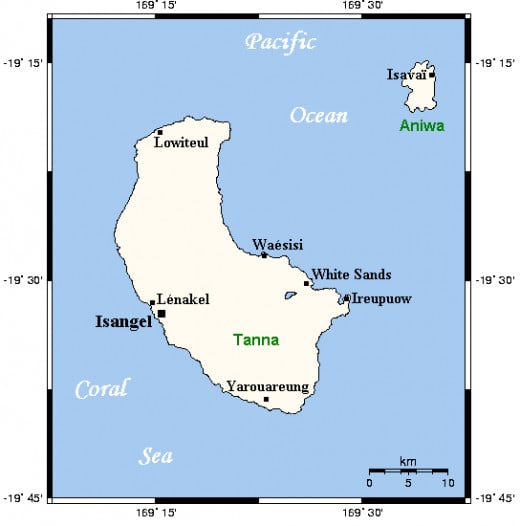
Method & Habitat Tapu
Two more tapus also help the environment; the method and habitat tapus were set in stone not initially to help the environment, but to ensure the survival of the people. The method tapu was put into place in order o prevent over fishing, and in some communities certain gear types are banned as well. " In Marovo lagoon, Soloman Islands, the use of gill nets and reef fishing with poisonous leaves are tapu among some descent groups" and dynamite fishing is forbidden among all in the descent group (Colding 7). These are to protect the environment from inhumane and over-efficient catching methods. Another method tapu hails from Papua New Guinea that only allows women to collect spider-claw crabs. According to this traditional belief system, there are only certain times when these crabs can be collected in order to conserve wildlife resources (8). Some communities in Vanuatu aren't allowed to spear fish at night, or use a gill net or drop line; and communities on the Kiribati and Tuvalu atoll, it is forbidden to use "pressure lanterns for the dip-netting of flying fish, monofilament gill nets, and the use of pear shell lures equipped with steel hooks" (7). The Pacific Islanders realize the impact of over-fishing and understand the consequences. They take measures, once again, to ensure the survival of their tribes and resources.
The habitat tapus prevent people from gaining access to sacred places and also to preserve certain places such as springs, forests, mountains, etc. Sacred groves are good examples of habitat tapus. Sacred groves are "smaller or larger ecosystems set aside as sacred for religious purposes" (8). In Hawaii, there are "tapu-regulated forest areas that have been preserved in order to supply rivers with nutrients for downstream fields and fish ponds" (8). Other places, on Tanna Island, that are forbidden are places like Ifekir waterfall and Iankahi. They are considered sacred and only a few Tannese people are allowed to venture to these places. Tapus on Tanna Island "restrain the impact of visitors on sacred places or in areas where increased tourist presence worsens local conflicts and antagonsms" (Fitzpatrik 192). Tourism seems to be a big issue when discussing tapus, the presence of tourist could possibly desecrate the sacred ground of forbidden places and then they will lose the power the locals believe they possess. Some of the tapus set on Tanna Island were made because people began to feud over money. In the Maori tribes there are sacred places such as, forests, mountains, rivers, and springs that were forbidden to visit; these places were better known as waahi tapu. Chiefs may also place tapus on the use of resources in the area to prevent scarcity of that particular resource. To this day Islanders treat sacred lands with much respect because either it is believed that spirits live in these places or that some important event took place on the land. The Islanders are very superstitious when it comes to sacred land because of the fear of desecrating that land and disturbing the spirits or power within the land. "Among traditional societies in Oceania, it was customary to impose tapus on the use of subsistence crops to prevent their being harvested at inappropriate times" (Conservation Ecology).
It's clear that method and habitat tapus play vital roles in conserving native lands as well as protecting species and ecosystems. Not only were they aware of their own survival, but the survival of other species as well. That's more than we can say for the modern world of today. If only people would take ideas such as conserving habitats and species, then so many animals wouldn't be going extinct. We wouldn't have to put laws on hunting and poaching, if only we would take a lesson from the aboriginals of the Pacific. Those are the steps people need to take in order to preserve this world for future generations.
Spirit Tapu
Another tapu is the idea of a spirit harming the people. In many tribes in Oceania women aren't allowed in certain places, or to certain ceremonies for fear of them being harmed. In the ceremony involving the female spirit Amb Kor women are forbidden to participate or even enter the ceremony enclosure. Women aren't allowed because the goddess might get jealous and become angry. So in fear that Amb Kor might harm their women, the men built an enclosure to keep them out. Another example of spirits affecting the lives of the living was in the Maori tribe in the early 19th century. A British settler lived among the Maori people and one day "he ate with his hand after handling an ancestral skull." From that point on no one in the village would go near him until he had "undergone a period of isolation" and a priest removed the tapu; because the man used his kitchen while in a state of tapu,, "the priest smashed all of his cooking vessels" and no one ever entered his kitchen again (Fletcher 55). Many people in Oceania respect the spirits and honor them with the highest rank.
Tapus Applying to People
In Polynesia many tapus adhere to people of lesser social status. For example, the body of a Polynesian chief shouldn't be touched and can result in death. The head of the chief is considered the source of mana, so that is the main body part that is forbidden to touch by those of lesser mana. "On Tahiti, the highest ranking chiefs had to be carried on litter, and in Samoa to this day, people lower their heads as they pass or sit opposite others who are their social superiors" (Strathern 119). Some consequences of touching someone of higher mana possibly end in death, and in order to prevent this the tribes had to come up with ways to minimize contact with people of lesser power. A chief is the highest rank in many of these tribes and should be respected and to disrespect the chief in any way could result in that persons death or even the harming of that persons relatives. Among the Maori even visiting chiefs could be dangerous to the people within the village and were closely monitored (Kjellgren 11). Even if the chief's shadow "fell on any pits where ordinary people kept their food, the food became tapu and had to be destroyed" (11). Tapus associated with the chief were held in high regard and for a tapu to effect so much was an important one to follow. Many tribes put safeguards in place in order to protect other people who were of lesser status. The Hawaiian tapu system "consisted of elaborate ceremonial safeguards" to prevent someone of lesser power coming into direct contact with those of "higher supernatural power" (Strathren 119). This went so far as having chiefs only travel at night because even their shadow was tapu and could cause a person to be sentenced to death. The Hawaiian chiefs had to have special bowls made to dispose of food scraps and bodily waste because the fear of harming ordinary people was so great (Kjellgren 12). All of this is a sign of respect and power, and could also be seen as a very strategic political move. If tapus are set on people in command, preventing anyone less superior from coming in contact with them, this instills a sense of fear in the people. Ultimately the people will respect the person in command because of these tapus.
Related Books
Gender Tapu
The gender specific tapu among the Maori once stated that men were tapu and the women were noa, which basically meant they free of tapu. That theory has now been rejected, as tapu is not gender specific, according to Fletcher. Tapu is simply a "temporary ritual state for both sexes. Women in the Maori culture are considered to be less tapu, simply because the rituals of men and women are different" (Fletcher 60). Women could be at the full power of tapu, but since men are more connected with sacred realms their tapu is higher. There are women who have equal of higher tapus than men. These women are of high rank, and according to the Maori are effective agents of tapu removal. Tapu women rituals were seen as representatives of a woman's ordinary nature "raised to higher level by their rank" (63). So the reflection of their rank determines the level of tapu. On the other hand, a woman of high rank could be seen as a guardian protecting the people from the punishment of gods when tapus were violated. Women do have the power of both tapu and noa, but only special women who have the power to "occupy the boundary between the sacred and the ordinary" (74). In some instances women are found performing rituals that even make men tapus. These rituals are mainly centered on childbirth. Maori men see their women as creators of life and when they bare a child, that child comes directly from the ancestral world (63). Because of their power to bring life, the Maori believed women could create or destroy mana, and for this reason women were banned from some sacred activities. New mothers and babies were considered to be tapu, and neither child nor mother were allowed to come in contact with others until they went through the tapu removal ritual. Another birth related tapu were abortions and stillbirths. If they weren't disposed of properly they would "become a class of lesser atua responsible for avenging transgressions of tapu" (69). If this tapu was broken it could cause disease in the trespasser. In another ritual the woman actually rids a warrior of fear and weakness, but at the same time makes him tapu. All she has to do is step over the warrior and the tapu is done. This is interesting because among the Maori women of high rank were normally ones who removed tapu, but they can also create tapu. The gender tapu theory mong the Maori incorporates both contamination and a sense of purity.
Another interesting connection with tapu and gender is how it separates men and women. Now in some cultures of Oceania it is forbidden for women to even sit with the men during a meal, while others seem to give all the power to women. In some cultures women aren't as vulnerable as men when it comes to tapu. Women are seen as a complete system, since the can give life making them temporally symmetrical (Gell 36). Men on the other hand, depend on women to keep their species going. Albert Gell described the process of holding the tapus in each sex as such, "Women were containers and conductors of tapu qulity, whereas men simply possessed tapu like a static electrical charge, and could be much more easily deprived of it" (36). The male tapu was especially weak during marriage ceremonies. Since a marriage involves intimate relationships with others outside the bloodline, this possessed a danger to the male tapu. Among the aboriginals in Oceania, marriage ceremonies were used to scatter the male tapu in ritually controlled environment. The tapu was scattered only among a "Specific category of relatives, the grooms Pahupahu" (47). The main purpose of the Pahupahu relatives was not to eliminate the bad tapu, but to "contain and disseminate" it (49). In order for this to happen the groom must ride in the shoulders of his mothers' brothers, and he prevents the groom from touching the ground and losing his sacredness. One end result-taking place with this ceremony is the loss of tapu, but was compensated for by the "multiplication of the groom into a composite being, which was, in itself, a complete microcosm, a system of differences" (50). To my understanding this was to counter the powerful mana of women. The marriage ceremony is to both disperse "individual tapu, reduce individual distinctiveness, and yet at the same time converse it by constituting a kind of collective being" (50). The marriage ceremony and disperse of male tapu is to make man and woman as one, a collective being as Gell points out.
A woman's role in matrilineal society was extremely important, which could be why many cultures see women as having powerful mana. This could also be why one would need to do a ritual, as described above, to put things on an equal playing field.
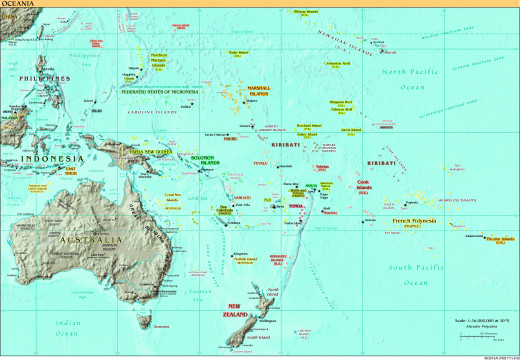
Tapus Today
Today tapus are different; in American we use tapus as guidelines for bad luck. They are created out of poor performances, and usually these kinds of tapus are seen in the sports world. In baseball there are many tapus that players live by religiously. For example, crossed bats are prohibited because the top bat might steal hits from the lower one. According to Hall of Famer Honus Wagner, "each bat contained only 100 hits...and after the 100th hit it would be discarded" (Gmelch 326). Another tapu among baseball players has to do with the pitchers. According to some players, "poor-hitting pitchers were believed to pollute or weaken the bats" (326). In the Class A Western Carolinas League, some players wouldn't even let pitchers touch or swing their bats for that specific reason. One ancient tapu in baseball lies within the word, no-hitter. "It is believed that if a pitcher bears the word no-hitter, the spell will be broken and the no-hitter lost" (328). This tapu is still practiced today and in order to avoid a loss sometimes not even sports broadcasters will utter the word no-hitter. In the sports realm tapus are still practiced in order to prevent bad luck, and will continue to be recognized for years to come.
A tapu is used all over the world, for many different purposes. Whether you hail from the many islands of Oceania or the modern day America, we all have certain tapus we use for guidelines to how we live our day to day lives. They live by ritual and tribal tapus that concern their environment and survival of their people. If their tapus are broken it can have tragic consequences sometimes ending in death. In our world we foolishly animate tapus, with black cats and ladders. We turn them into cartoon characters resulting in strings of bad luck.
Tapus have no limits to the people of Oceania; they aren't just set on the people and places, tapus exist whether or not you choose to believe. Tapus were set in order to bring order to a culture, they are there to bring balance and help the tribes survive. Even by violating an unknown tapu can cause a person to become tapu. In Hawaii, the locals once believed that outsiders could violate certain tapus without even knowing it. So the next time you eat exotic foods or visit sacred place remember how others view them. Take into consideration another's culture cause you never know, but you just might break one of their tapus.
Works Cited
Bixler, Ray H. "Sibling Incest in the Royal Families of Egypt, Peru, and Hawaii". Journal of Sex Research. Aug. 1982: 264.
Colding, Johan. "Taboo System: The Lessons about Informal Institutions for Nature Management". Georgetown International Environmental Law Review. Winter 2000: 7-8.
Colding, Johan and C. Folke. "The Relations Among Threatened Species, Their Protection, and Taboos". Conservation Ecology [online]. Oct. 2007. <http://www.consecol.org/vol1/iss1/art6/>
Fitzpatrik, Judith M. ed. Endangered Peoples of Oceania: Struggles to Survive and Thrive. Westport, Connecticut: Greenwood Press. 2001. 192-193.
Fletcher, Adele. "Sanctity, Power, and the 'Impure Sacred': Analyzing Maori Concepts of Tapu and Noa in early Documentary Sources". History of Religions. MasterFILE Premier. EBSCO. 47.1 (2007): 51-74.
Gell, Alfred. "Closure and Multiplication: An Essay on Polynesian Cosmology and Ritual". Cosmos and Society in Oceania. Eds. Daniel de Coppet and Andre Iteanu. Washington: Berg Publishers. 1995. 21-50.
Gmelch, George. "Baseball Magic". Conformity and Conflict. (1997): 320-329.
Kjellgren, Eric P. "Tapu in Polynesia". Faces. MasterFILE Premier. EBSCO. 17.3 (1995): 10-12.
Lewis, Gilbert. "Revealed by Illness: Aspects of the Gnau World". Cosmos and Society in Oceania. Eds. Daniel de Coppet and Andre Iteanu. Washington: Berg Publishers. 1995. 165-188.
Strathern, Andrew, et al. Oceania: An Introduction to the Cultures and Identities of Pacific Islanders. Carolina: Academic Press, 2002.
Weiner, Annette B. "The Sibling Incest Taboo: Polynesian Cloth and Reproduction". Cosmos and Society in Oceania. Eds. Daniel de Coppet and Andre Iteanu. Washington: Berg Publishers. 1995. 275-308.




